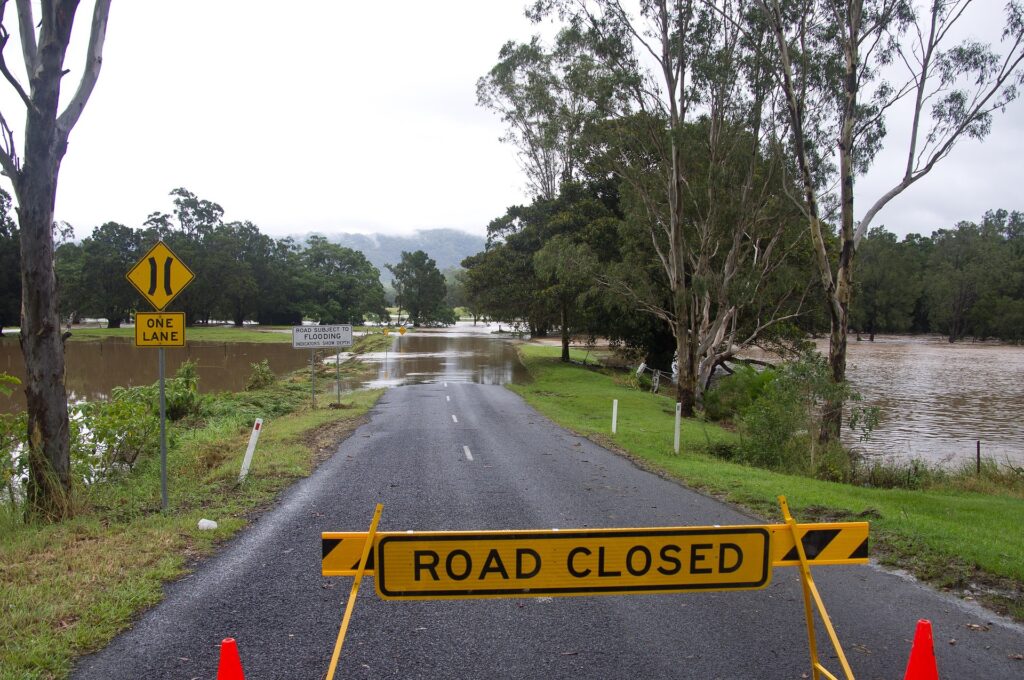A shocking surge of 50% in home insurance premiums within high-risk regions across Australia has been brought to light, with climate change-induced disasters being identified as the main driver behind this staggering increase, reports the UK’s Guardian Newspaper.
This unsettling revelation comes from a recent report presented by the Actuaries Institute. The Actuaries Institute’s latest report, unveiled on Monday, delves into the intricacies of home insurance affordability and the financing of flood-related expenses. The report paints a disconcerting picture of a 28% spike in median home insurance premiums across all states for the year leading up to March. The average premium, now at $1,894, represents the most substantial surge witnessed over the past two decades.
Adding to the alarm is the revelation that premiums for properties situated in high-risk zones, particularly those susceptible to flooding, have surged by an astonishing 50%. This upward trend is attributed to the mounting frequency and severity of climate-related events, further fueled by global heating.
Struggling with Affordability Stress
The study undertaken by the Actuaries Institute has shed light on a concerning reality—roughly 1.24 million Australian households, comprising almost one in eight, are grappling with the burdens of “affordability stress.” This condition implies that these households allocate over a month’s worth of their annual income towards home insurance. Notably, these financially strained households dedicate approximately $4,000 annually to insurance, more than double the average expenditure.
The majority of these households are located in economically disadvantaged areas, often within regional communities. This financial strain makes it challenging for these households to cope with the escalating costs, raising a critical concern that some might be compelled to relinquish insurance coverage due to its increasing unaffordability.
Factors Behind the Surge
Sharanjit Paddam, a co-author of the report, highlights that this surge is the outcome of a combination of factors, including building cost inflation, disruptions in supply chains, and the growing occurrence and severity of natural disasters.
He said: “This is the largest increase in home insurance premiums I have seen over the last two decades. Half the increase in home insurance premiums relates to building cost inflation, which has spiked during the past two years due to supply chain shortages. There’s also been an increase in natural disasters and higher reinsurance costs, driven by the climate change impacts we’re already seeing.”
Paddam continued, “Based on science, we expect these home insurance affordability pressures are likely to continue to worsen due to climate change. If we don’t take policy action now, we can expect to have more people abandoning home insurance.
“Without insurance, households will struggle to recover from disasters and governments, taxpayers, charities, and many informal means of support will be left to assist.
“This usually results in households receiving some support but will not allow them the full economic recovery they would receive if insured.”
These findings echo the predictions outlined in a Green Paper released by the institute in the preceding August. This paper had sounded the alarm about the potential for climate change to propel insurance premiums upwards, disproportionately impacting already vulnerable households. The current report appears to confirm the seriousness of these predictions.
Urgent policy recommendations required to address the price rises
In response to these alarming trends, the authors of the report, in collaboration with the Actuaries Institute, have put forth a series of urgent policy recommendations. These proposals aim to alleviate the strain on communities susceptible to floods, cyclones, and bushfires, especially within the context of the ongoing cost-of-living crisis. Among these measures are strategies for risk mitigation, reforms in insurance-related taxation, targeted subsidies, and collaborative initiatives such as the establishment of an insurance pool dedicated to flood-related incidents.
Paddam says that the current peak in premiums is a result of multiple factors, including inflation in building costs, disruptions in supply chains, and the increasing frequency and severity of natural disasters. He underscores the urgency of adopting proactive policies to address these challenges, as the effects of climate change are likely to exacerbate the affordability crisis, potentially compelling more households to forgo insurance coverage.
Hardest-Hit Regions North Queensland and Western Australia
The report from the Actuaries Institute pinpoints the northern rivers region of New South Wales as the area most affected, having endured multiple floods in the preceding year. North Queensland and Western Australia closely follow due to their elevated risk of cyclones. The research identifies riverine flooding as a significant contributor to insurance premium costs for the most severely impacted households.
For these households, researchers estimate that if fully insured, their combined annual flood premium would reach a staggering $1.5 billion, averaging $8,800 per household. Sharanjit Paddam underscores that the $1.5 billion figure underscores the scale of the challenge, indicating that flood insurance is already approaching the realm of being unaffordable.
Call for Comprehensive Solutions and Government action and inquiry
Elayne Grace, the CEO of the Actuaries Institute, stressed the urgency of the flood insurance affordability challenge. She calls for a comprehensive policy approach to secure enduring benefits for all Australians. She said:
“Risk reduction is the only way ultimately to address affordability stress by lowering the underlying risk and therefore costs in a sustainable way, especially when we factor in climate change. An optimal mix of measures could be supported by using better data, technology, and climate risk frameworks.
“If the government was to give consideration to an insurance pool, any future model would need to consider the fact that flood risk is highly localized in Australia among a relatively small number of households with significant exposure.”
Grace added, “Flood insurance affordability pressures are acute, and there is a need to address this problem urgently. “We need to tackle this problem holistically, with a well-designed suite of policy measures to achieve long-term benefits for all Australians.”
Stephen Jones, the assistant treasurer and minister for financial services, acknowledges the findings of the report and assures that the federal government is actively addressing these concerns. He highlights the Disaster Ready Fund, designed to allocate up to $200 million over five years for disaster prevention and mitigation projects, as a significant stride forward.
Source: The Guardian








